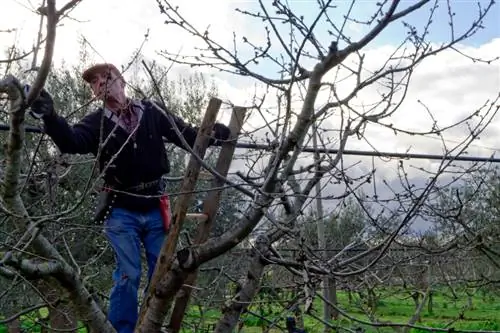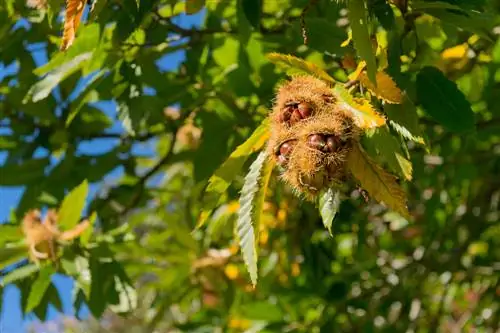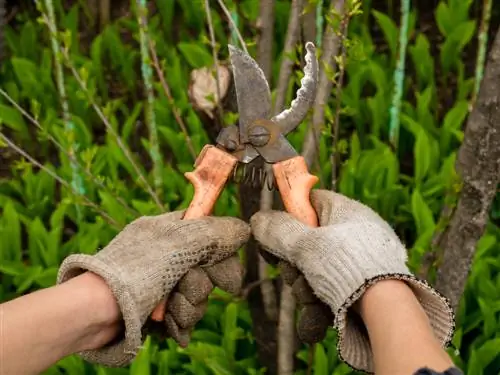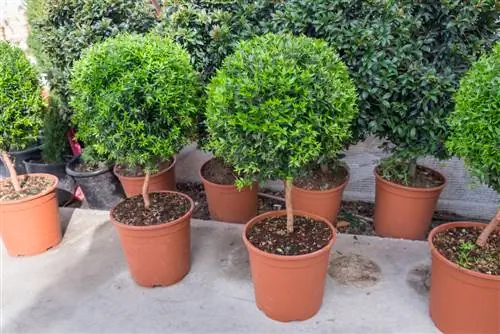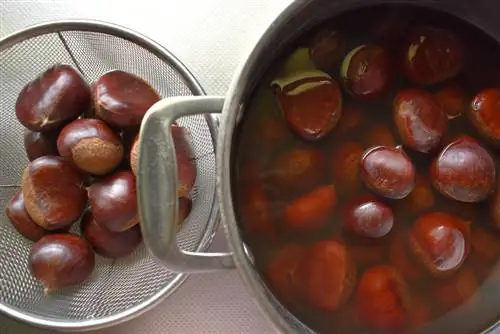- Author admin [email protected].
- Public 2023-12-16 16:46.
- Last modified 2025-01-23 11:21.
There are different opinions among experts about the need to prune a chestnut, which are certainly justified. You have to decide for yourself how you handle your chestnut. Carefully weigh the risks and benefits of regular pruning.
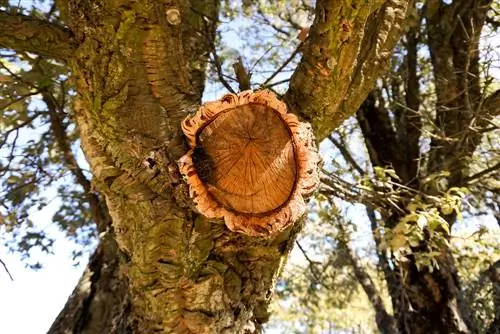
How do I cut my chestnut correctly?
When cutting chestnuts, only thin branches with a diameter of less than 5 centimeters should be cut. It is important to have clean and sharp cutting tools to avoid illness. Prioritize removing diseased and dry branches and water shoots to promote tree he alth.
What speaks against pruning?
The opponents of pruning sweet chestnuts and horse chestnuts primarily cite the risk of disease transmission as a reason for rejection. Corresponding pathogens can be transmitted directly during cutting, for example through “contaminated” tools. In addition, the cut surface is an entry point for bacteria, fungi and pests.
What are the advantages of a regular cut?
Regular pruning will help keep your chestnut he althy. Sick and dry branches are the first to be removed when pruning. You can also positively influence the shape and growth of your chestnut through targeted pruning.
As far as possible, only thin branches with a diameter of less than five centimeters should be cut. If you only cut very rarely, this will hardly be possible. If you want to grow your chestnut in a pot, you can't avoid cutting it.
Do I have to pay attention to anything special when cutting?
To keep the risk of disease transmission as low as possible, you should always work with clean tools. If you have previously pruned a sick plant, disinfecting the tool is highly recommended. Well-sharpened scissors and knives cause significantly fewer injuries than blunt cutting tools. This means fewer germs can penetrate the tree.
How should I prune my chestnut?
After removing the diseased and dry branches, cut off the water shoots. You should also remove weak side shoots; they do not contribute to the stability of the tree. Always pay attention to an even and harmonious shape and improve it a little if necessary. The more you prune your chestnut when it is young, the easier the tree will be to care for as it ages.
The most important things in brief:
- regular pruning promotes tree he alth
- use clean and sharp cutting tools
- cut off diseased branches and water shoots
- avoid unnecessary injuries
Tip
The more carefully you prune your young chestnut, the less often you will have to resort to secateurs later.


